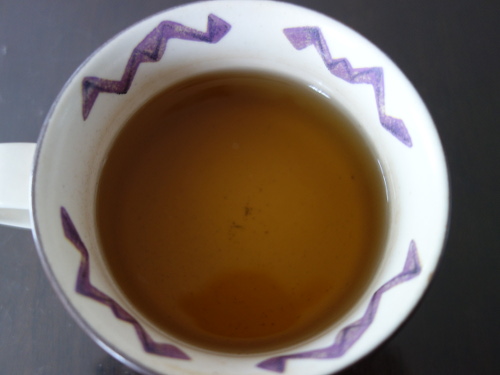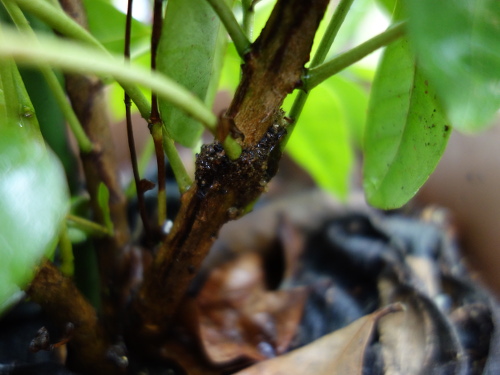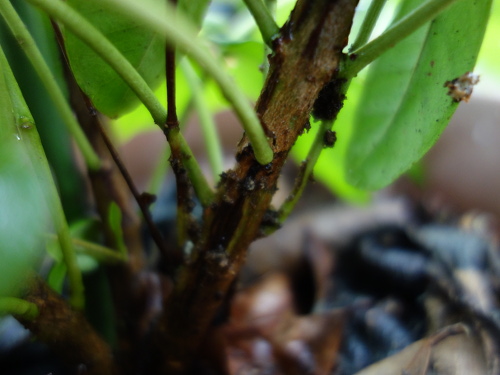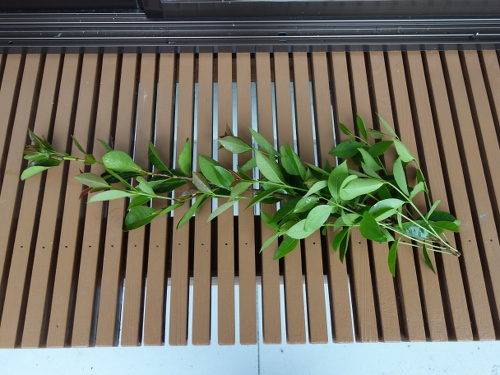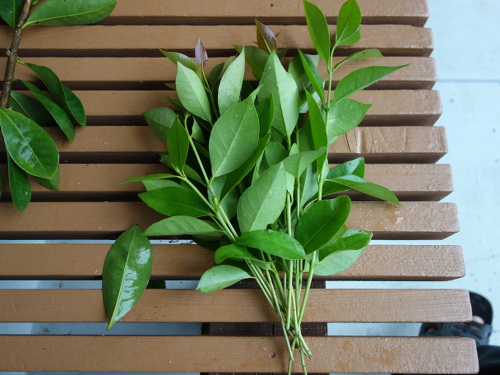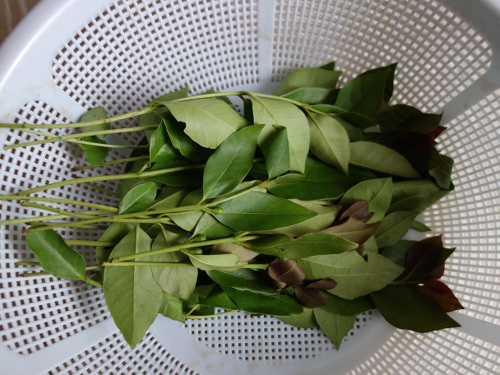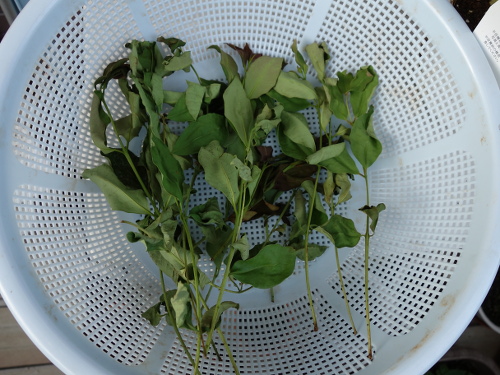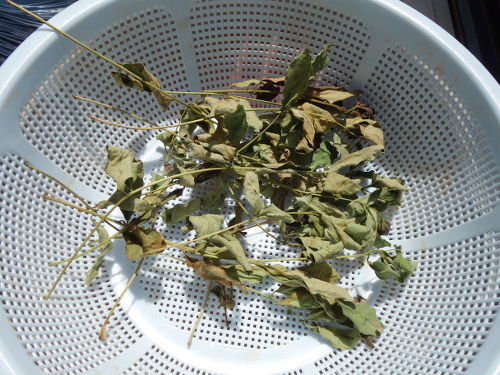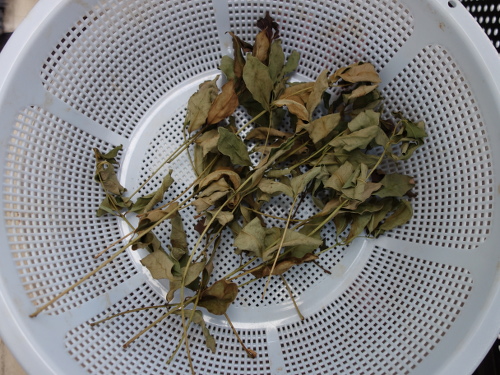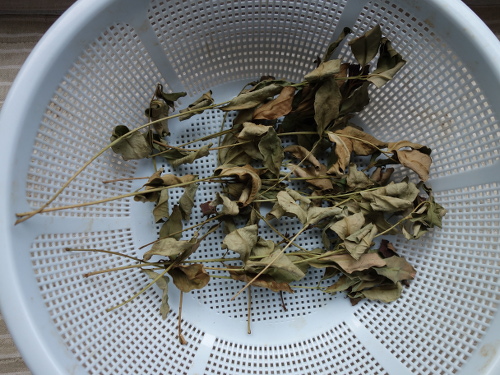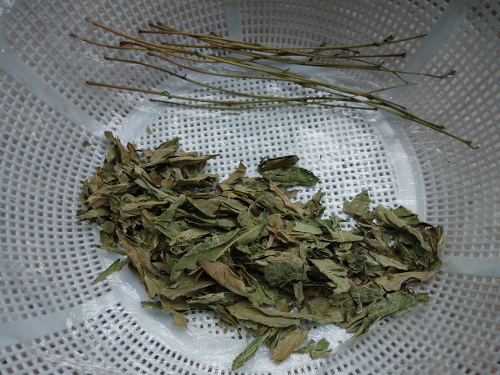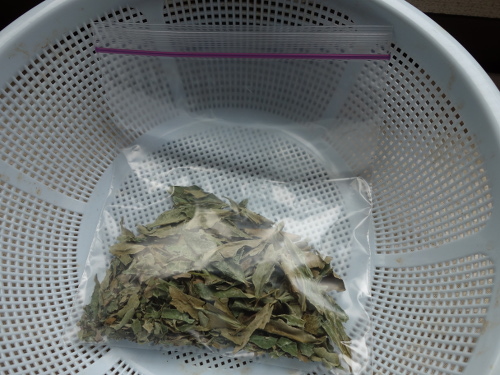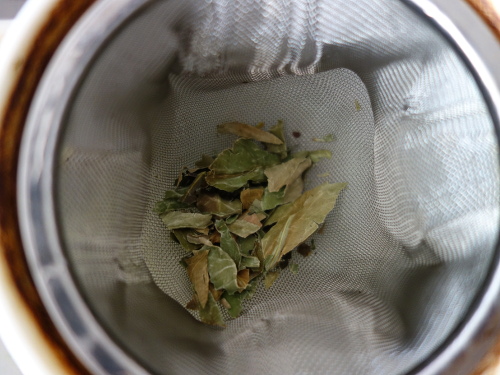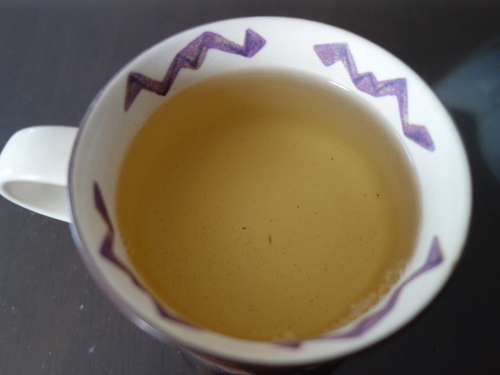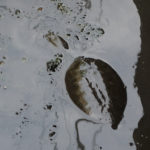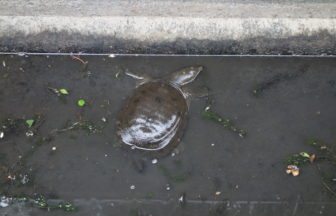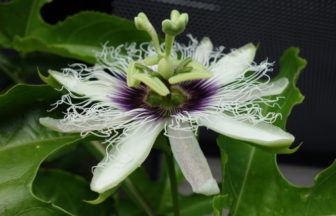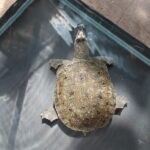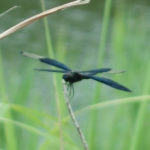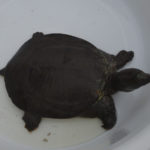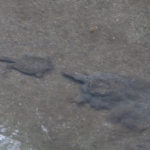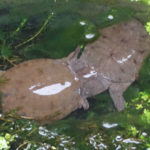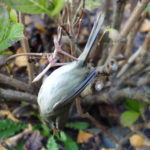It is generally accepted that guava tea can lower blood glucose level. Guava leaves contain tannin which is known as one of the antioxidants, and vitamin C, vitamin U, polyphenol, and minerals, etc. I prepared home-made guava tea leaves using one-year-old guava seedling because the seedling was damaged by harmful insect. Throwing away is “mottainai.” The procedure is as follows:
Making procedure of home-made guava tea
I found the nest of a larva of larva of a long-horned beetle near the root of the seedling.
I removed the sawdust-like substance. A circumference of stem was completely gnawed by a larva of a long-horned beetle living in a hole. Cambium layer is severed. This means that further growing is desperate because nutrients cannot be provided from the root.
This is a one-year-old seedling of guava whose stem near the surface of potting media received eat damage by a larva of a long-horned beetle. I decided to prepare dried leaves to make guava tea because throwing away without effective utilization is “mottainai.”
New branches of guava seedling.
The new branches of guava seedling were put into basket.
Two days have passed since sun drying started.
About one week has passed since sun drying started.
8 days have passed since sun drying started.
Sun drying seems to be completed after 10 days.
Dried leaves wrapped with Saran Wrap was gripped.
Fragmented leaves were separated from branches.
This is a finished product of dried leaves for making guava tea.
The leaves are stored in Zip Lock not to absorb moisture.
Part of tea leaves were put into tea strainer in a Kyusu (Japanese pot for making tea). Boiled water was poured into the tea strainer.
Guava tea after 5 min extraction. The rest in Kyusu was left unpoured for 10 minutes more.
The guava tea extracted for 15 minutes in Kyusu.

